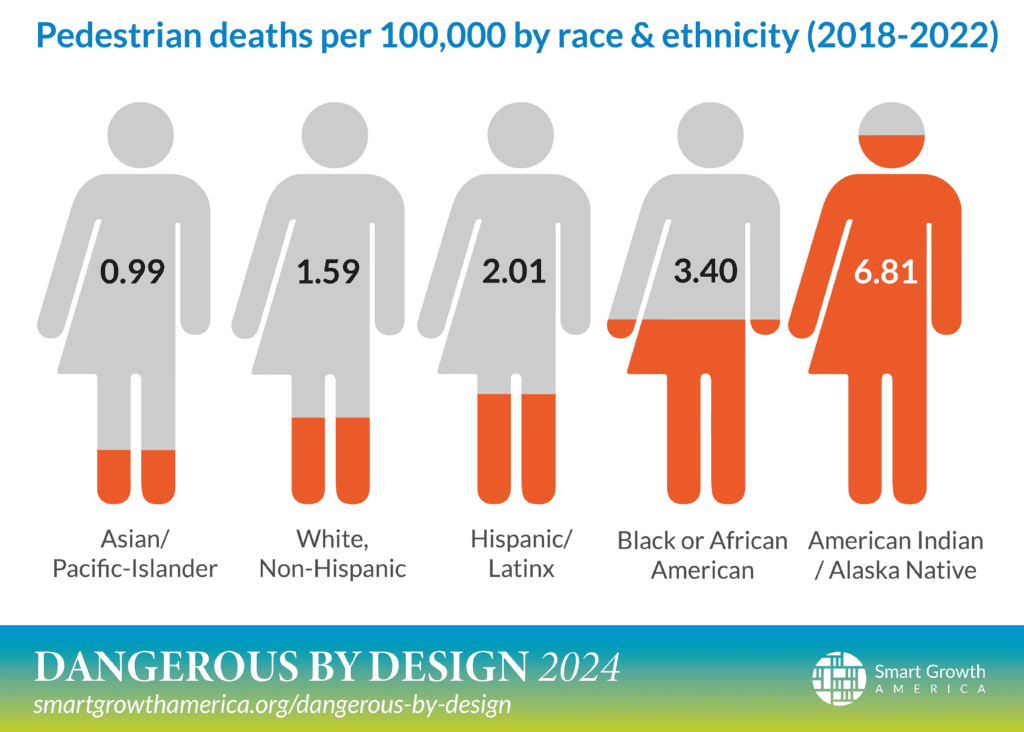Smart Growth America just released its report “Dangerous by Design” which shows a 75% increase in the deaths of people walking since 2010.

Our transportation system is not an unpredictable natural catastrophe. It’s not a new disease without a vaccine or treatment. Our roads and vehicles are designed and regulated by human beings who now have decades of evidence about the choices that kill people. What will it take for them to change?
We know this can sound harsh and accusatory. We spend a lot of time here at America Walks painting the positive vision of walkable communities. Safe streets and good transit combined with ample housing, jobs, stores and public spaces are safe, healthy, equitable, economically vital and environmentally sound. We and thousands of advocates nationwide plead with decision makers to see the benefits and ignore the naysayers. We celebrate walkability wins and encourage community members that they can “make a difference.”
But the crushing and grim reality of 20 deaths a day stirs a different emotion. Smart Growth America’s released rankings of 101 metro areas shows that nearly every metro has gotten more dangerous—and those that didn’t get worse have mostly remained the same. What will it take for those in power to act?
We know the problem. Road design that prioritizes speed over safety. Cars, SUVs and trucks are getting larger and more deadly, with reduced visibility of people outside of vehicles. And we know how to redesign roads and vehicles to make them less deadly. Elected and agency officials have the power to implement these solutions.
Everything else is just excuses. We know that pedestrian deaths can go down. Europe is doing it, and they also have people that drink, use cell phones, and wear dark clothing while walking. Why? Their roads and vehicles are less dangerous.
But the people with power keep reaching for excuses. They call for more education, even though the data shows that decades of victim blaming and shaming has had no effect. Sure, remind people to use caution, but let’s not make believe that is a solution.
We understand the claim that there is not enough money. But it rings hollow when a single highway interchange could finance sidewalks for a small city. And when states are funneling massive amounts of flexible federal infrastructure dollars into highway expansion.
Nor does the claim of a “balanced approach” sound persuasive when one side of the scale is weighted with deaths, serious injury and torn-apart families and communities.
It is not even what the public wants. National and local polling again and again show that the public wants transit, walking and biking prioritized over highway spending.
So what exactly is the obstacle then? A clue might be found in the populations that bear the greatest burden of unsafe roads – low income and Black, Brown and Native communities. These communities are the ones with the least political power.


Look, we get it. Our staff collectively has decades of transportation advocacy experience and two of us have held elected office. There are lots of powerful economic interests that have grown used to road-building money. And there are members of the public who loudly lay claim to the right to drive everywhere fast and view safety measures as an assault on those rights. Easier to go along than to disturb the status quo.
But we return here to where we started. If you had the power to save lives, would you use it? Read the Dangerous By Design Report. We’ll be right here waiting for the right answer. And advocating for it.